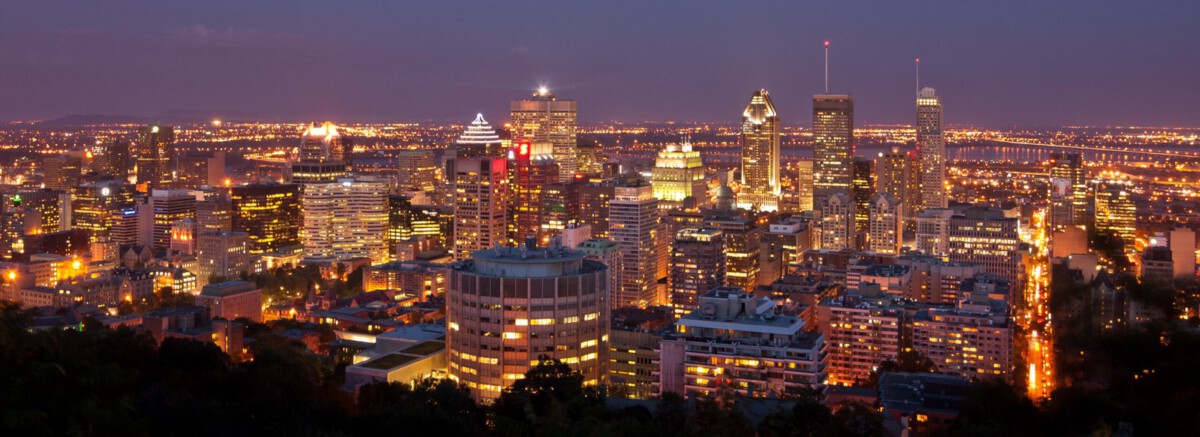Banff, Alberta

Banff is one of those places that looks like a postcard no matter where you stand, but lately, the magic has come with a price. In 2024, Banff was swarmed by nearly 4 million visitors, a record that left locals feeling boxed in by endless crowds and gridlocked traffic. The town council reported a striking 30% bump in traffic congestion during high season, with parking spaces disappearing before noon most days. Residents have voiced their frustration at town meetings, saying it’s become nearly impossible to enjoy their own parks and trails. Businesses are hustling to meet overwhelming demand, but workers are stretched thin and burnout is common. The town has started testing a reservation system for its most popular sights, hoping to ease the pressure, but many are skeptical it’ll be enough to bring back Banff’s peaceful charm.
Whistler, British Columbia

Whistler’s reputation as a winter wonderland is under siege, not from snowfall, but from a blizzard of visitors. Last year, the town recorded around 3.5 million tourist arrivals, setting off alarms about the strain on both the environment and local infrastructure. The mayor announced a “Sustainable Tourism Strategy” in an effort to balance the economic boon with the need to protect Whistler’s natural beauty. Still, longtime residents say the soul of their town is getting lost amid the crowds and commercial sprawl. The local waste management system has struggled to keep up, and popular trails now resemble busy city sidewalks during holidays. The challenge is clear: keep Whistler thriving without letting it be loved to death. The debate on how best to do this is louder than ever.
Victoria, British Columbia

Victoria’s stately charm has always been a draw, but the recent boom in cruise ship visits is testing the limits. In 2024, ship arrivals jumped by 25%, leading to shoulder-to-shoulder crowds and snaking lineups at places like the Butchart Gardens and the Empress Hotel. Local shops are bustling, but some residents say the city is losing its gentle pace and unique culture. Many complain about the noise, litter, and inflated prices brought by the visitor surge. City officials are considering limiting cruise ship visits and encouraging tourists to come during quieter months. Some business owners are worried about losing revenue, while others welcome the idea if it means reclaiming a more livable city.
Jasper, Alberta

Jasper’s wild beauty is at risk, as surging visitor numbers threaten everything that makes it special. In 2024, Jasper National Park drew more than 3 million visitors, raising serious concerns over ecosystem damage and increased wildlife encounters. Park rangers have noticed more litter, trampled vegetation, and wildlife disturbances, which prompted calls for stricter visitor caps and monitoring. Local guides say the increased traffic is changing animal behavior, making encounters more dangerous for both animals and people. Conservation groups are pushing for new policies, but the debate over access versus preservation is fierce. Residents and park staff are united in wanting to protect Jasper, but the solutions are far from simple.
Niagara Falls, Ontario

The roar of Niagara Falls isn’t just from the water—it’s the sound of 14 million annual visitors jostling for the perfect selfie. Crowds pack the walkways and viewing platforms, and local infrastructure is straining under the pressure, leading to traffic jams and long waits everywhere. The city has invested in better public transport and upgraded facilities, but locals say it often feels like the falls belong more to tourists than residents. Many are nostalgic for quieter days, lamenting how commercial development has changed the landscape. City leaders are now trying to promote lesser-known attractions to spread out the crowds, but the iconic falls remain the main draw, and the struggle continues.
Quebec City, Quebec

Quebec City’s cobblestone streets and old-world flair are irresistible to tourists—so much so that a 20% spike in international arrivals last year has made daily life a challenge for locals. Popular districts are often packed, and hotel and rental prices keep climbing. Residents worry that the city’s distinctive culture is being diluted by the crush of visitors. Businesses are thriving, but some locals feel they’re losing touch with the slow, historic pace that once defined their home. Officials are encouraging visitors to explore off-the-beaten-path neighborhoods, but most flock to the same iconic sights. The city’s identity hangs in the balance as it navigates the growing pains of popularity.
Tofino, British Columbia

Tofino’s windswept beaches and laid-back surf culture are legendary, but the recent surge to over 1 million annual visitors has created big headaches for this small town. Residents have voiced concerns about overcrowded beaches, traffic bottlenecks, and strained water resources. Environmentalists warn that increased foot traffic is damaging sensitive dune ecosystems and wildlife habitats. Local leaders are piloting sustainable tourism efforts, like visitor caps and educational campaigns, but opinions are split on how strict these measures should be. Some business owners are worried about lost revenue, while others say the town’s natural wonders are too precious to risk. The debate is as lively as the waves hitting Tofino’s shore.
St. John’s, Newfoundland and Labrador

St. John’s, with its colorful row houses and rugged coastline, has become a hit with cruise ship tourists, but the influx is overwhelming the city’s narrow streets and historic districts. A 30% increase in cruise arrivals last year has meant crowded sidewalks, overbooked restaurants, and a spike in short-term rentals. Locals worry the city is losing its authentic, lived-in feel, with some saying, “It’s starting to feel like a theme park.” City officials are drafting new rules to manage cruise schedules and promote responsible tourism, hoping to protect the city’s charm. The conversation is ongoing, but the stakes feel higher than ever.
Calgary, Alberta

Calgary’s big-city energy and gateway status to the Rockies have made it a magnet for an ever-growing number of tourists. Last year, the city saw tourism jump by 15%, creating a boom in hotel bookings and restaurant business, but also putting stress on transit, parks, and local neighborhoods. Housing prices have crept upward, and some residents worry that the city’s unique western heritage is getting lost in the shuffle. Officials are pushing for more public transit options and off-peak promotions to ease the squeeze. Locals are proud of their city’s success but want to make sure it doesn’t come at the cost of livability.
Montreal, Quebec

Montreal’s vibrant festivals and historic streets are a magnet for international visitors, with a 10% increase last year alone. The city’s creative energy is as strong as ever, but locals are feeling the pinch of packed metros, crowded markets, and rising rents. Some neighborhoods, once quiet and residential, are now bustling year-round. The city government is encouraging tourists to discover less-visited areas, but most still flock to the Old Port and downtown. Residents cherish Montreal’s unique culture and are vocal about wanting to keep the city authentic, even as it becomes more popular with the world.
Ottawa, Ontario

Ottawa, Canada’s capital, is no stranger to visitors, but a 12% surge in tourism last year has changed the city’s rhythm. Attractions like Parliament Hill and the ByWard Market are often packed, and infrastructure is showing signs of strain. Residents have become increasingly vocal about noise, litter, and the impact on daily commutes. City officials are working on better crowd management and promoting visits during quieter months, but the tension between tourism and local life is palpable. Some locals miss the days when their favorite parks and museums felt like community spaces rather than tourist hotspots.
Halifax, Nova Scotia

Halifax, famous for its maritime history and stunning harbor, has seen visitor numbers soar to over 1.5 million, putting a tangible strain on housing and local services. The buzz of activity is good for business, but many residents are frustrated by rising rents and busy streets. The city is prioritizing sustainable tourism, expanding public transit and encouraging off-season travel. Still, the challenge is real: how to keep Halifax welcoming and accessible to both visitors and locals. The conversation is far from over, as the city searches for a balance that works for everyone.
Kelowna, British Columbia

Kelowna’s lake views and wineries have turned it into a hot spot, but the recent 20% jump in tourist visits has created worries about water shortages, overcrowded beaches, and housing affordability. Residents have noticed busier roads and longer lines at local attractions, with some feeling squeezed out of their own favorite spots. The city is leaning into sustainable tourism, pushing for eco-friendly practices and spreading visitor traffic across the region. While tourism drives Kelowna’s economy, the community is pushing to make sure growth doesn’t come at the cost of its natural beauty and quality of life.
Charlottetown, Prince Edward Island

Charlottetown’s historic streets and seaside charm have attracted over 1 million visitors, a number that’s stretching the city’s capacity. Locals are seeing more crowded public spaces and higher living costs, especially during peak tourist season. The city is investing in better transit and promoting responsible tourism, but there’s a real sense of worry about losing the town’s close-knit atmosphere. Residents want to share their home with the world, but not at the expense of their own comfort. The push for sustainable tourism is stronger than ever.
Niagara-on-the-Lake, Ontario

Niagara-on-the-Lake’s picture-perfect vineyards and quaint downtown have long been a draw, but a 15% rise in visitors has made peace and quiet a rare commodity. Local resources, from parking to water supply, are stretched thin, and the surge in short-term rentals is pushing up housing costs. The town is working on eco-friendly tourism policies and encouraging off-peak visits to ease the strain. Residents are proud of their town’s charm and are determined to protect it, even as the crowds grow. The debate over how to manage tourism is ongoing and sometimes heated.
Mont-Tremblant, Quebec

Mont-Tremblant’s ski slopes and year-round activities are a huge hit, but a recent spike in visitors—over 2 million last year—has put pressure on transportation, housing, and the environment. Local officials are investing in sustainable transit and encouraging tourists to respect the area’s delicate ecosystems. Some residents have voiced concerns about noise, congestion, and the changing character of the town. There’s a push to ensure that tourism revenues benefit the whole community, not just big businesses. The effort to strike a balance is constant, with passionate voices on all sides.
Canmore, Alberta

Canmore’s proximity to Banff and jaw-dropping scenery have made it increasingly popular, with a 20% jump in visitors recently testing the town’s limits. Locals are grappling with crowded trails, higher prices, and a sense that their once-peaceful town is becoming unrecognizable. Environmental advocates warn that sensitive habitats are at risk from the heavy foot traffic. The town council is considering stricter visitor management and new conservation initiatives, but not everyone agrees on the best path forward. The tension is real, and the sense of community is being put to the test.
Osoyoos, British Columbia

Osoyoos, famous for its warm lakes and vineyards, has seen visitor numbers rise to over 500,000, making it harder for locals to find affordable housing and enjoy the town’s slower pace. The influx is a boon for local businesses but has led to crowded beaches, busy roads, and increased demand for public services. The mayor has called for more sustainable tourism initiatives and better planning to ensure growth doesn’t overwhelm the town. Residents are hopeful but wary, wanting to share the beauty of Osoyoos without losing what makes it special. The future of this sunny lakeside town hangs in the balance.






